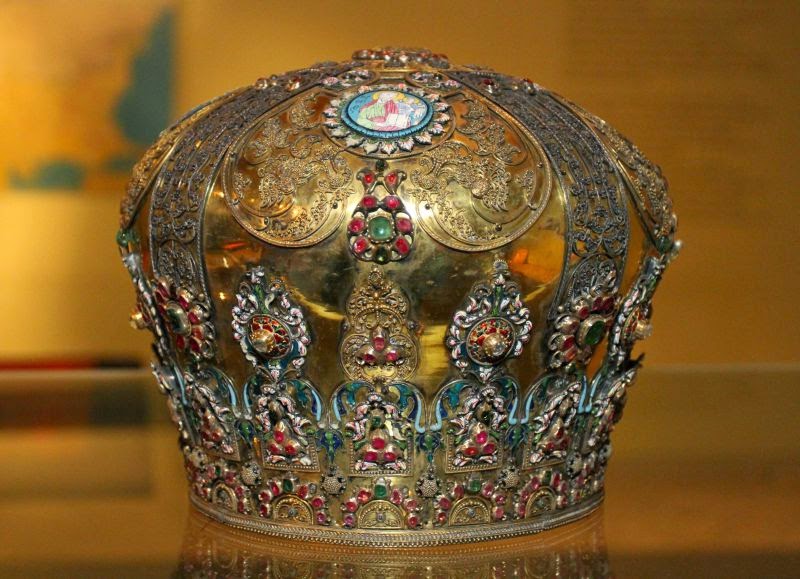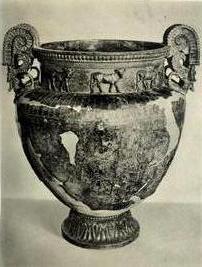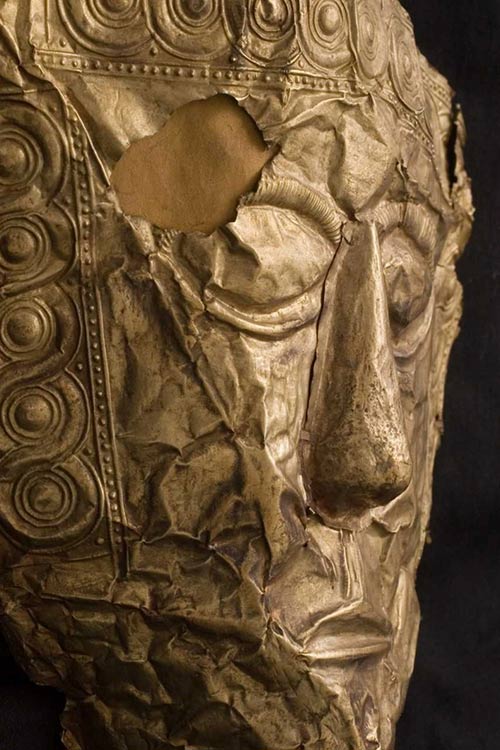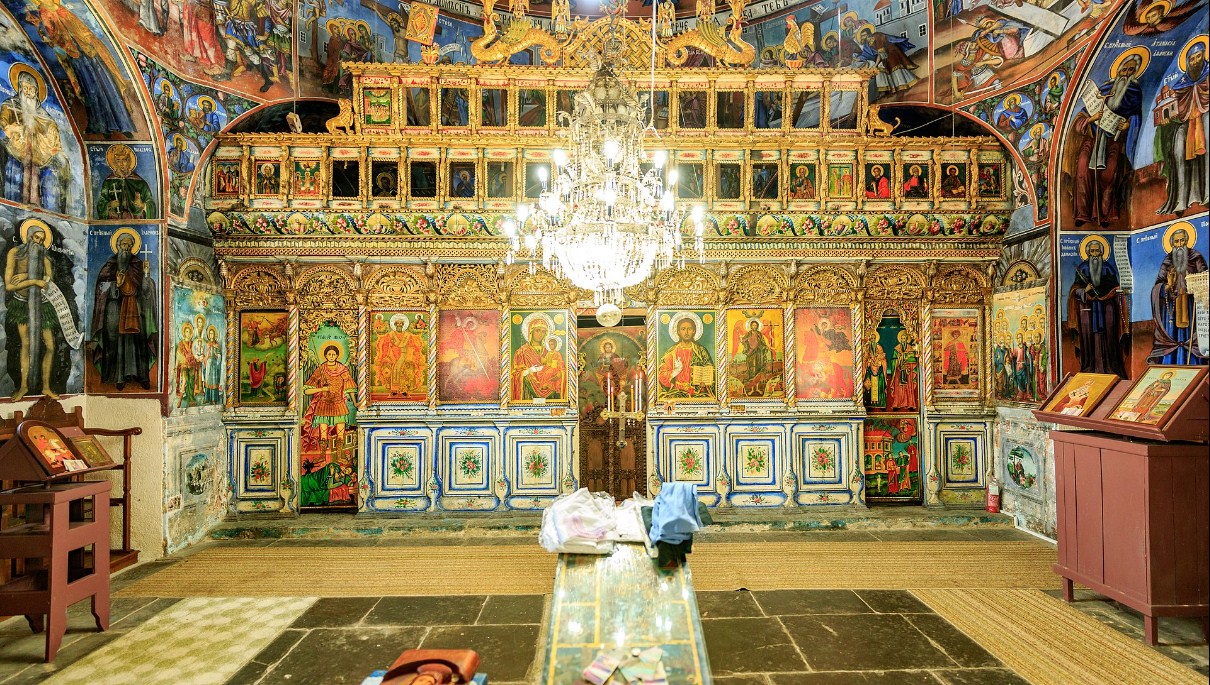Close to 3,000 registered and unregistered historic artifacts have been illegally taken out of Macedonia by invading armies and criminal organizations. Some of the most impressive objects are kept in museums around the world and private collections.
During the Balkan wars the Greek, Serbian and Bulgarian armies and agents of the state traveled Macedonia in pursuit of information about archaeological sites and churches that hold valuable artifacts.
Ceremonial and religious objects, Christian icons and woodcarvings, religious scriptures, antique statues, jewellery, antique helmets and more can be found in museums in Athens, Belgrade and Sofia.
According to investigations from the Macedonian authorities, around 10,000 religious artifacts were stolen from Macedonia through 2014.
Bringing these artifacts back home is an uphill battle – perhaps an impossible task, however, Macedonia Times will make the symbolic gesture of presenting some of the most unique objects and the story behind their theft.
Crown of the Archbishop of Ohrid

The crown that was worn by several Archbishops of the Macedonian church of Ohrid, was stolen from the church Saint Bogorodica Perivlepta by the invading Bulgarian army in 1916.
The so-called mythra was a gift from Venice. It weighs 1.5 kilograms of pure gold and has exactly 329 precious stones.
This is the crown that was worn by Arsenij – the last archbishop of the Macedonian Church of Ohrid before it was annulled (link) in 1762 at the hands of the Greek church in Constantinople.
Today, the crown and more than 80 religious relics stolen from Macedonia can be seen in the Bulgarian national museum in Sofia.
Crater of Koreshnica
A well-planned theft in 1996 had taken place near the village of Koreshnica, resulting in the looting of a 6 century BC Macedonian burial chamber.
The prized finding – a voluptuous crater for mixing and storing wine, showing definitive marks of a Macedonian technique, it is now in the private collection of Shelby White of New York. Standing nearly 1.8 meters tall, the bronze crater was displayed during an exhibition at the Museum of Fine Arts in Houston.
It has been alleged by experts in antique artifacts that the chamber included multiple military helmets made of bronze, which have been also auctioned off.


Locating and breaking-open the burial chamber couldn’t have been carried out without the help of several men who knew what they were doing. The crew had to insert metal rods and wooden boards deep underground to stop rocks and ground from collapsing
The burial chamber was nearly 5 meters under the surface. It was covered by 4 meters of rocks and soil. Those who reached the cache had to be pointed to the site by people with knowledge of archaeology and the local terrain.
How it was transported out of Macedonia at that height points to an organized group with insider contacts.
Crater and golden masks of Trebenishta
During World War 1, along with the Bulgarian army arrived agents, spies and tomb raiders. Being aware of the numerous archaeological sites across the country, these people took to finding out everything they can in order to enrich themselves and their country.
The archaeological site Trebenishta contains layers dated to multiple historic periods. Bulgarian archaeologist Bogdan Filov, with the help his German colleague Karl Schkorpil, excavated the burial site Trebenishta in the Ohrid region.

They discovered a burial chamber – home nobles and soldiers. The skulls of the nobles were covered by golden masks. Their wrists and fingers were also covered in gold plates and jewellery.
Part of the burial ceremony was securing the deceased with rich quantities of wine – which was achieved by interring them with a beautiful large, bronze wine crater. Additional objects included multiple pieces of gold jewellery, statuettes, votive lamps and more.
All taken by the Bulgarian and Serbian states.

In the period between the two world wars, Serbian archaeologist Nikola Vulik discovered and excavated six new graves at the same archaeological site. The graves contained the remains of soldiers who were also adorned with jewellery and military equipment.
A total of 825 objects were taken from Trebenishta. Of these 258 are located in the archaeological museum in Sofia and 187 in the national museum in Belgrade.
According to the Makedonska Nacija portal, two institutions in Ohrid hold 380 objects. Two masks from the burial ceremony are located in Sofia and two in Belgrade.
Athena of Heraclea Lyncestis

A marble statue of the so-called Athena Parthenos was discovered in a vineyard in Bukovo, Bitola region in 1931. The statue was immediately taken out from Macedonia to Serbia, where it now resides in the national museum in Belgrade.
This statue is the work of a sculptor from the Roman period. It represents one of four replicas of the original statue which is dated to the year 438 BC, which has been celebrated since antiquity.
Icons from Macedonian painters
It is a tragedy that religious objects are not spared from thieves and those who pay them. Macedonia has lost hundreds upon hundreds of icons due to theft over the years.
Although there are many cases where centuries-old icons, crosses and other implements of the Macedonian Church have been stolen, there are few cases that are especially devastating.
Saint George’s church in Lazaropole was targeted by well-informed thieves on 23 April 2013 and was despoiled of 30 icons and the woodcarving from the altar.

Only one month earlier in the same year, thieves broke into the church of Saints Peter and Paul in the neighbouring village Tresonche, taking 32 icons painted on wooden planks. In the process of removing the icons from the iconostasis, the thieves had damaged a number of other icons.
In September 2012, thieves broke into the church The Rising of Holy Mother of God in Debar, stealing icons of immense cultural and artistic importance, along with several church relics.
In July of the same year, thieves removed four icons dated from the year 1780, from the church Saint Archangel Mihail in the village Radozhda, Struga region.
The church Holy Transfiguration in the village Gopesh, Bitola region was despoiled of 42 icons.

One highly interesting case is the theft of six highly valuable icons from the church Saint John the Apostle at Kaneo, on Lake Ohrid. Interpol had found the icons and they were returned to the church, but not long after that, they were stolen again.
A police raid in Albania uncovered 1,077 icons in a cache owned by Gjergi Timo. The icons had been destined to appear at illegal auctions where they are usually purchased by wealthy individuals. Experts from Macedonia have succeeded in identifying only 20 icons so far, according to latest reports on the case.
New approach to safeguarding Macedonian cultural heritage
The subject is complicated because tomb raiders and thieves are nimble and inspired by a strong monetary incentive. The authorities, at the top of the decision-making process, are faced with the impossible mission of supervising all archaeological sites and churches.
Thus far, the state has not proposed publicly a strategy with which to safeguard Macedonian artifacts. One way to preserve the icons is to keep originals in museums while replacing them with with replicas. In the case of the church in Lazaropole, the authorities had proposed exactly this to the church council consisting of residents of the village, which it refused. Only months later, the icons were stolen.



